Lexington-Fayette County is a bustling midsize city in Kentucky located in the middle of some of the most fertile and iconic farmland in the US. Not unlike other similarly-sized US cities, Lexington is facing development issues that need addressed as the city continues to grow:
- a lack of affordable housing supply,
- loss of farmland,
- and a history of sprawling, car-focused neighborhood development.
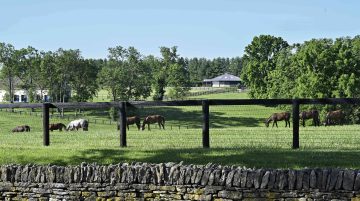
Photo by Jeff Rogers
What makes Lexington different from other cities, however, is how much it stands to lose if these issues aren’t addressed — a $2.6-billion agriculture industry.
The jobs and economic impacts created by agriculture are connected to dozens of other industries throughout the Lexington community – manufacturing, trucking, local food, education, insurance, accounting, real estate, and more.
The agriculture industry is the factory floor of Lexington-Fayette County, and its success depends on the fertile soils that make up the farmland that surrounds the urban core.
Fayette Alliance

Available Land
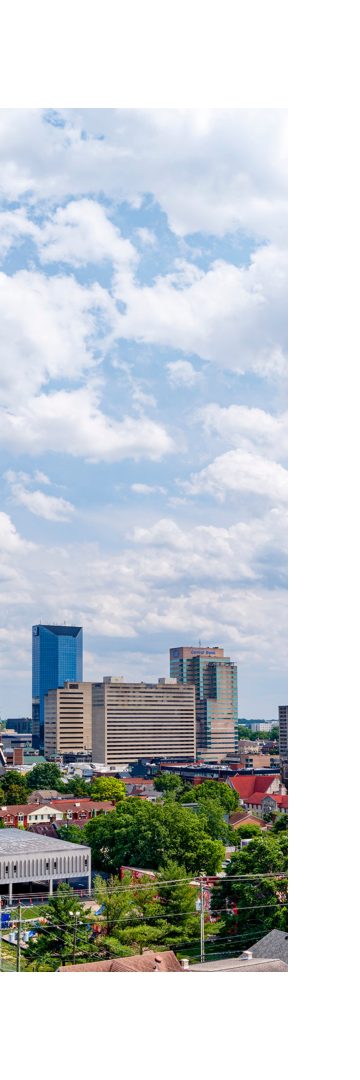
Land is essential to a city’s growth — that’s why it must be used responsibly in order to maximize its potential.
To say that “Lexington currently doesn’t have enough land inside the Urban Services Boundary to grow” is a myth that can easily be disproven.
In 2024, Fayette Alliance commissioned a research study to gain a better understanding of the land available for development inside Lexington’s historic Urban Services Boundary (USB).
This study, titled “Grow Smart: Land Use Analysis and Recommendations,” provides a detailed analysis of where and how Lexington can grow in the coming years.
- Lexington has approximately 5,000 acres of vacant and undeveloped land left inside the USB.
- Of this available land, ~3,500 acres are zoned for housing development and ~1,300 are zoned for economic development.
- Click below to view the maps of undeveloped land inside Lexington’s USB. ⬇️


Housing
Fayette Alliance’s Grow Smart housing study provides a detailed map of where the vacant land is located inside Lexington’s Urban Services Boundary (USB) and provides recommendations for how this available land can best be utilized to accommodate future growth.
- Important: Where development happens is a vital component of whether it’s affordable and sustainable.

The development of “Missing Middle” housing will be essential to meet growth demands, maximize the 3,500 acres of land available for housing development, and create housing units that are affordable for Lexingtonians.
- Consider: As a result of the increased cost of materials, shortage of labor, rise of interest rates and more, large, single-family homes that rely on car-centric development are just not affordable for most community members.
The graphic below demonstrates the potential number of new housing developments possible to build inside the Urban Services Boundary — approximately 31,000-42,000 units.
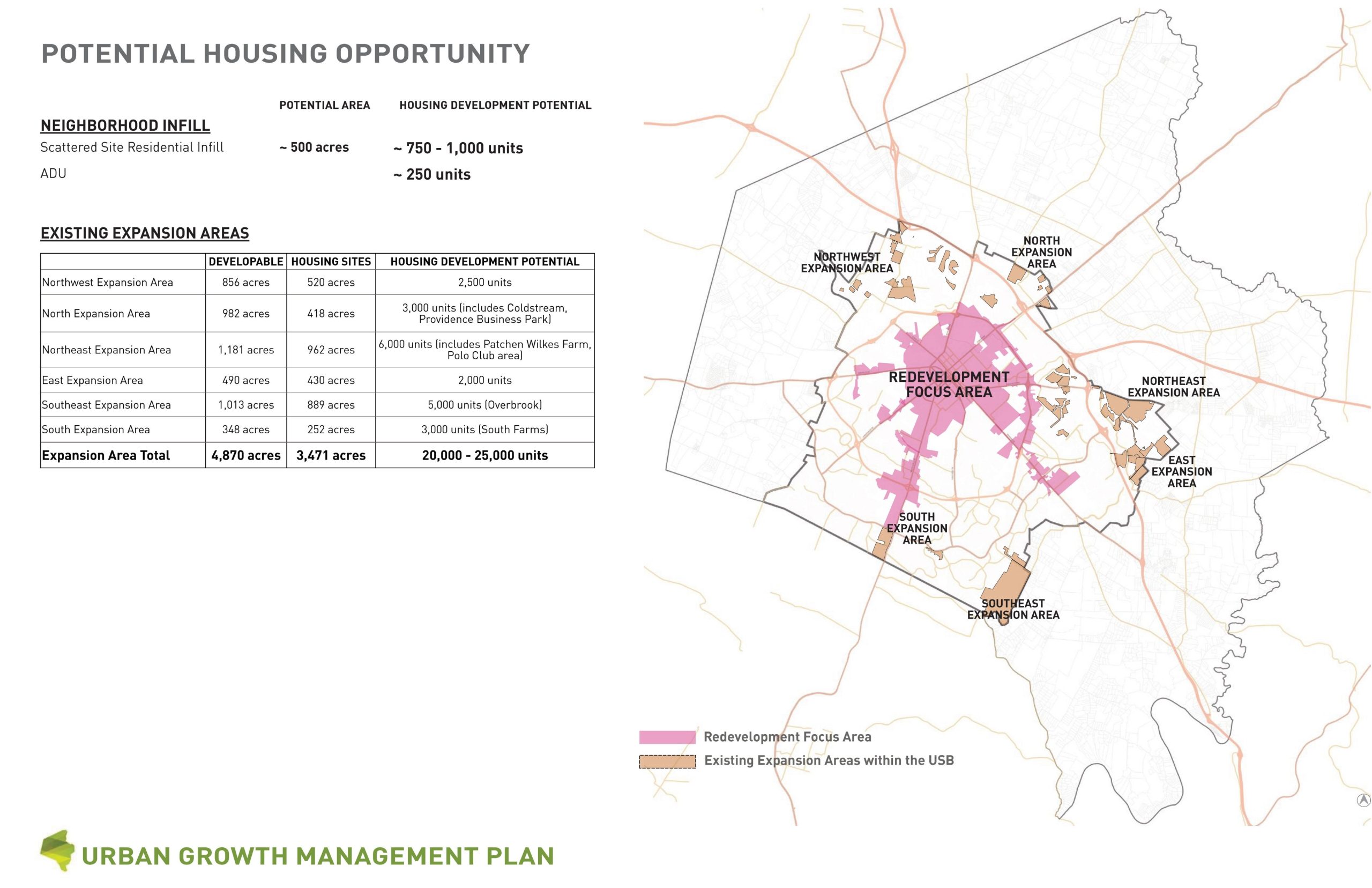
By the Numbers: Housing Opportunities in Lexington-Fayette County.
- With thoughtful development that prioritizes diverse housing types, 20,000-25,000 housing units can be built on existing land inside the USB.
The most efficient way for Lexington to meet housing demand, and build the type of affordable units that are most needed, is to diversify the types of housing being built, and build them near existing services, jobs, infrastructure, and transportation routes.
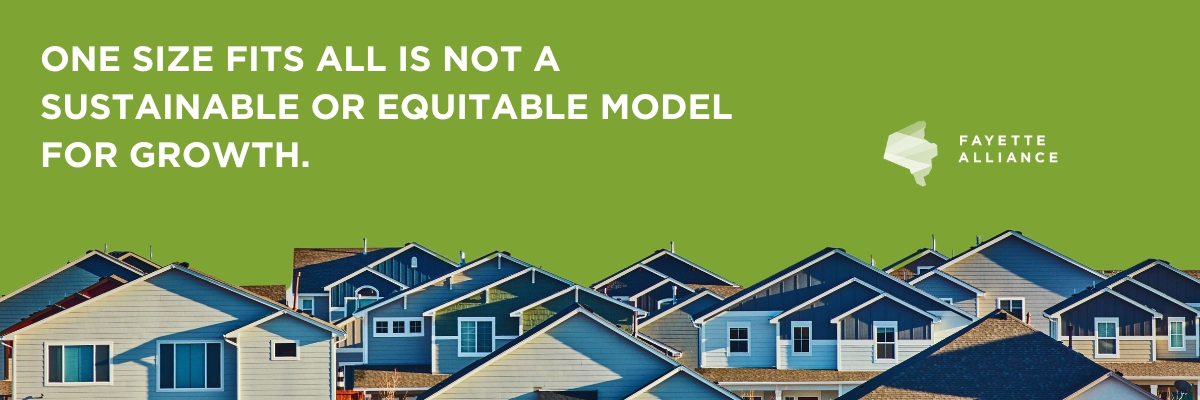
Economic Development
As a city grows, it must supply jobs for a growing population. The good news for Lexington, is that in recent years, its economy has continued to grow and thrive.
- Fact: Lexington’s job growth rates post-pandemic were just announced as the best of any metro area in the Cleveland Federal Reserve Bank’s district, which includes much larger cities like Cincinnati, Cleveland, and Pittsburg.
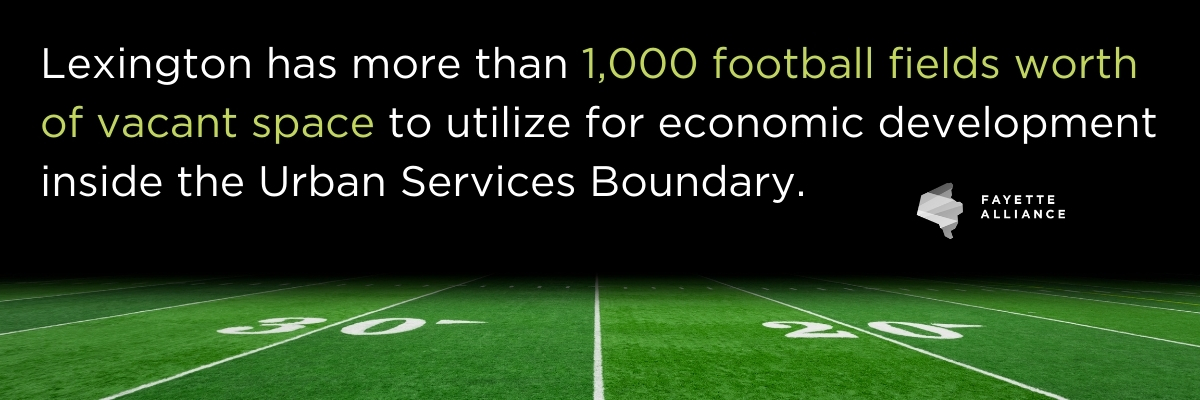
Fayette Alliance’s research shows that not only does Lexington have enough land available for job creation inside the Urban Services Boundary (USB), but it also has underutilized office and industrial space.
- Lexington-Fayette County has 1,300 acres of vacant and undeveloped land available for job creation inside the USB — this includes the 250 acres of land located on the Coldstream Research Campus.
- 1,150,881 sqft. of vacant industrial space currently exists inside the USB.
- 335,759 sqft. of vacant office space exists in downtown Lexington.
- 1,178,033 sqft. of vacant suburban office space exists throughout Lexington-Fayette County.


Photo by Jeff Rogers
Located outside of the Urban Service Boundary lies Lexington’s world-famous agriculture industry, and some of the most fertile Prime soils in the US.
Sure, the rolling hills and pastures of the Bluegrass landscape are nice to look at, but more importantly, they serve as the factory floor of Lexington’s agriculture industry.
A recent study conducted by the University of Kentucky reveals the substantial influence agriculture has on the Lexington-Fayette community, estimating a total economic impact of over $2.6 billion annually and supporting more than 16,000 jobs.
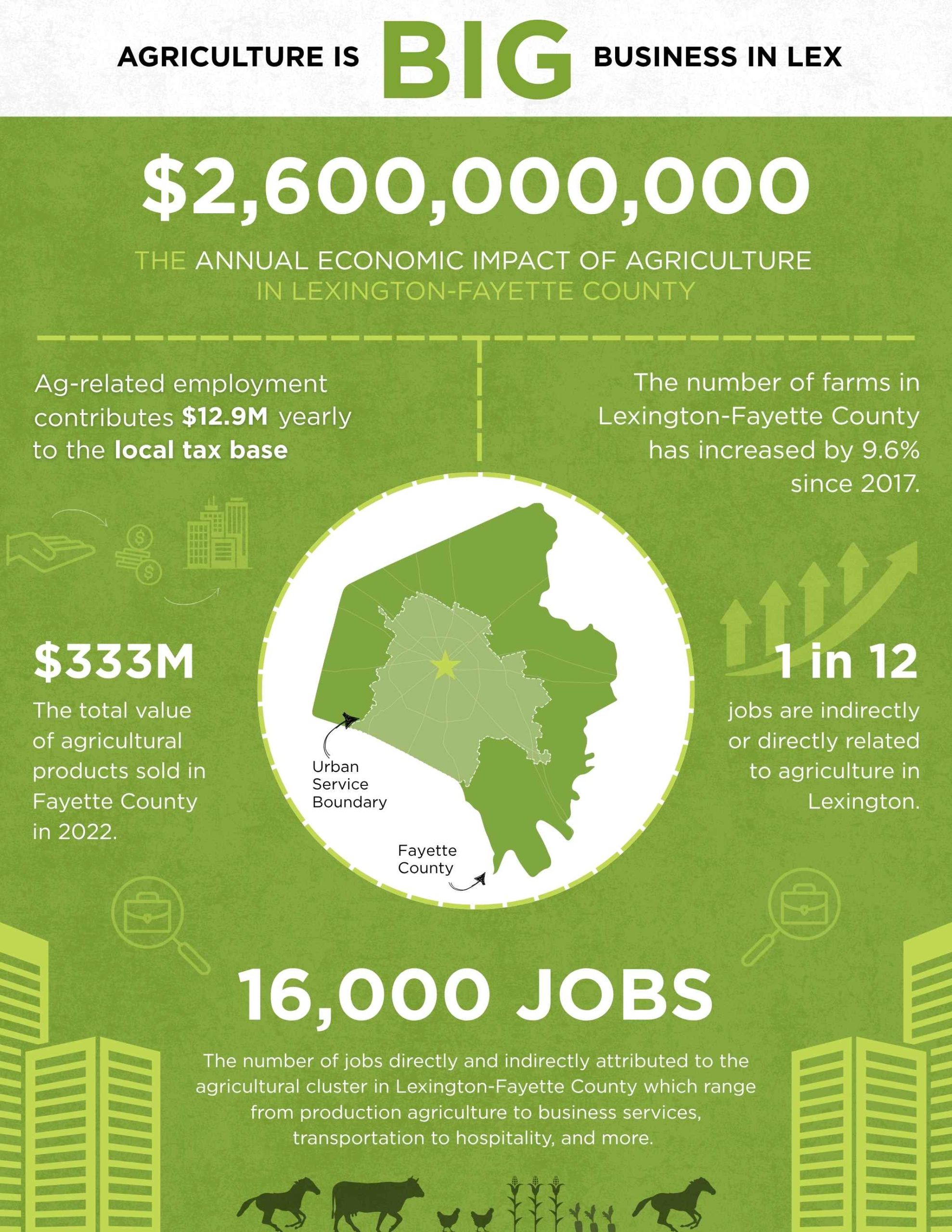
To continue to foster growth within the agriculture sector, Lexington must continue to work towards balancing development and preservation. Continued outward expansion of Lexington’s historic Urban Service Boundary will only diminish the value of its $2.6-billion agriculture industry, iconic landscape, and the soils that both rely on.
- Consider: The study conducted by the University of Kentucky also speaks to the potential ripple effects of just a 10% decline in production agriculture; predicting an additional $19-million loss in economic output every year from related industries and household spending.
Urban Services Boundary
The Urban Services Boundary forces city planners and developers to creatively use available land inside our city, as opposed to continually expanding outward into our signature Bluegrass farmland.
By maintaining the USB, we can be balanced in our growth approach, develop in an innovative way, and continue to create a sustainable world-class city in a world-class landscape.




